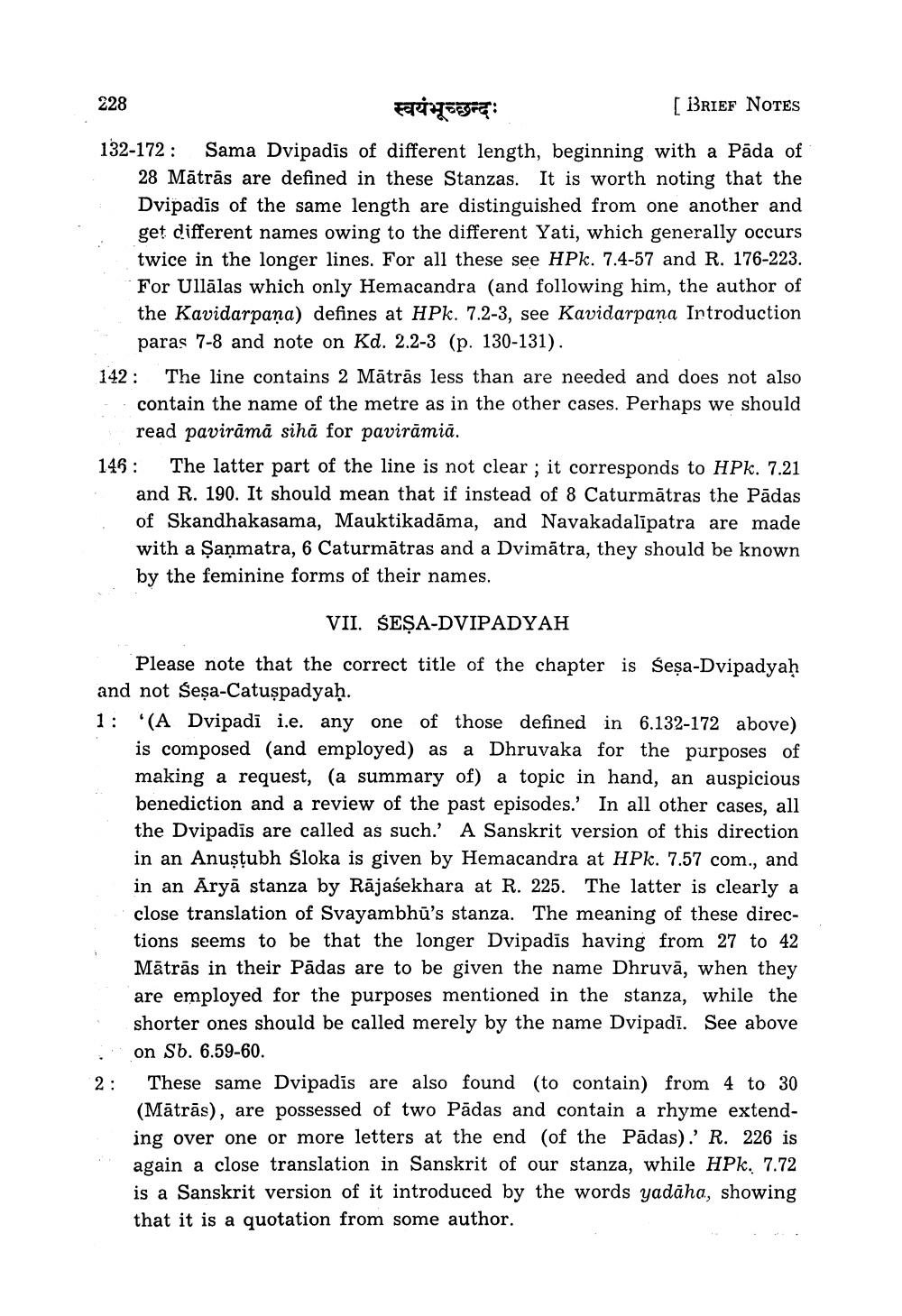________________
228
स्वयंभूच्छन्दः
[BRIEF NOTES
132-172: Sama Dvipadis of different length, beginning with a Pāda of
28 Mātrās are defined in these Stanzas. It is worth noting that the Dvipadis of the same length are distinguished from one another and get different names owing to the different Yati, which generally occurs twice in the longer lines. For all these see HPk. 7.4-57 and R. 176-223. For Ullālas which only Hemacandra (and following him, the author of the Kavidarpaņa) defines at HPk. 7.2-3, see Kavidarpana Introduction
paras 7-8 and note on Kd. 2.2-3 (p. 130-131). 142: The line contains 2 Mātrās less than are needed and does not also
contain the name of the metre as in the other cases. Perhaps we should
read pavirāmā sihā for pavirāmia. 146: The latter part of the line is not clear; it corresponds to HPk. 7.21
and R. 190. It should mean that if instead of 8 Caturmātras the Pādas of Skandhakasama, Mauktikadāma, and Navakadalīpatra are made with a Şaņmatra, 6 Caturmātras and a Dvimätra, they should be known by the feminine forms of their names.
VII. SEȘA-DVIPADYAH
Please note that the correct title of the chapter is Sesa-Dvipadyah and not Sesa-Catuspadyaḥ. 1: (A Dvipadi i.e. any one of those defined in 6.132-172 above)
is composed (and employed) as a Dhruvaka for the purposes of making a request, (a summary of) a topic in hand, an auspicious benediction and a review of the past episodes.' In all other cases, all the Dvipadis are called as such.' A Sanskrit version of this direction in an Anuştubh śloka is given by Hemacandra at HPk. 7.57 com., and in an Aryā stanza by Rājasekhara at R. 225. The latter is clearly a close translation of Svayambhū's stanza. The meaning of these directions seems to be that the longer Dvipadis having from 27 to 42 Mātrās in their Pādas are to be given the name Dhruvā, when they are employed for the purposes mentioned in the stanza, while the shorter ones should be called merely by the name Dvipadi. See above
on Sb. 6.59-60. 2: These same Dvipadīs are also found to contain) from 4 to 30
(Mātrās), are possessed of two Pādas and contain a rhyme extending over one or more letters at the end of the Pādas).' R. 226 is again a close translation in Sanskrit of our stanza, while HPk. 7.72 is a Sanskrit version of it introduced by the words yadaha, showing that it is a quotation from some author.




